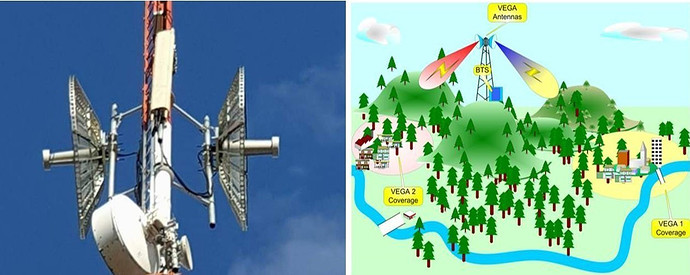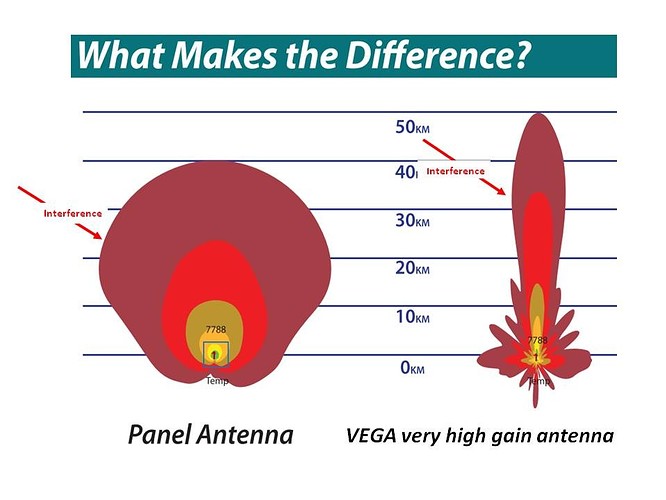How does a very high gain narrow beam VEGA antenna improve Up-Link QOS by far more than its higher gain?
A critical challenge facing 4G LTE and 5G either fixed or mobile wireless operators is how to cost-effectively improve the usually inferior Up-Link performance.
The down link enjoys an outdoor antenna and high down-Link power, but the up-link is limited to the low output power and antenna gain of the mobile phone.
The outdoor narrow beam antenna (either fixed beam or multi-beam) has by the inherent definition of “Antenna Gain “a much higher gain than any common panel antenna. This definition means that the “signal” in the S/(N+I) (or Ec/No, SINR or else) expression is higher with narrow beam antennas. But this is not the whole story.
The reason is shown in the following diagram:
On the left is the radiation pattern of a common panel antenna and on the right the radiation pattern of a VEGA-very high gain narrow beam antenna at 900 MHz.
It is evident that the VEGA antenna acts as a spatial filter due to its narrow beam nature thus reducing interference coming from its sides. The panel antenna has a much wider beam pattern thereby allowing similar interferences to get right into the receiver with little attenuation, causing receiver desensitization, and reducing up-link performance.
The bottom line is that with VEGA narrow beam antennas the Signal is higher (due to the higher gain nature of narrow beam antennas) while the Interference is lower as explained. Thus, the ratio S/(N+I) is improved much more than just the gain difference and QOS is improved.
This rational is important to the overall broadband QOS, especially in rural and deep-rural communities’ service.

